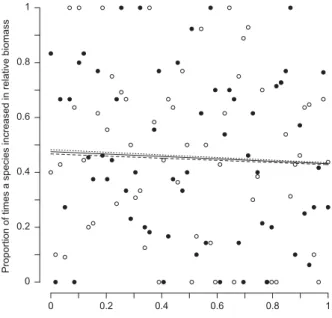The relative contributions of species richness and species composition to ecosystem functioning
Texte intégral
Figure



Documents relatifs
Je me détendis un peu… Je m’étais figée en entendant ce prénom, je n’avais pas du tout envie de voir ce beau-frère… Notre mère rouvrit les yeux, et se mit à..
C’est pour cela qu’en interrogeant ce Dieu, que l’homme croit être muet et inexistant, sur ces abominations qui ruinent la terre, on a obtenu comme Réponse divine de Sa part ceci
GrAJLEMlE TOES
+ Évitez tout contact avec les autres lorsque vous êtes malade.. + Consultez un professionnel de la santé si vos
Malgré des recommandations de privilégier des solutions classiques de pistes ou bandes cyclables, l’analyse de l’expérimentation réalisée dans l’Hérault et sa comparaison avec
We review the current theory and identify six expectations for scale dependence in the BEF relationship: (1) a nonlinear change in the slope of the BEF relationship with spatial
The diversity effects of ecosystems that share an assembly motif are close to each other, confirming the functional redundancy of clustered species (Figure 5c).
The combinatorial analysis generates hierarchical trees of species clustering: each tree is used to define a priori functional structure of ecosystems, with 2 to 5 functional groups